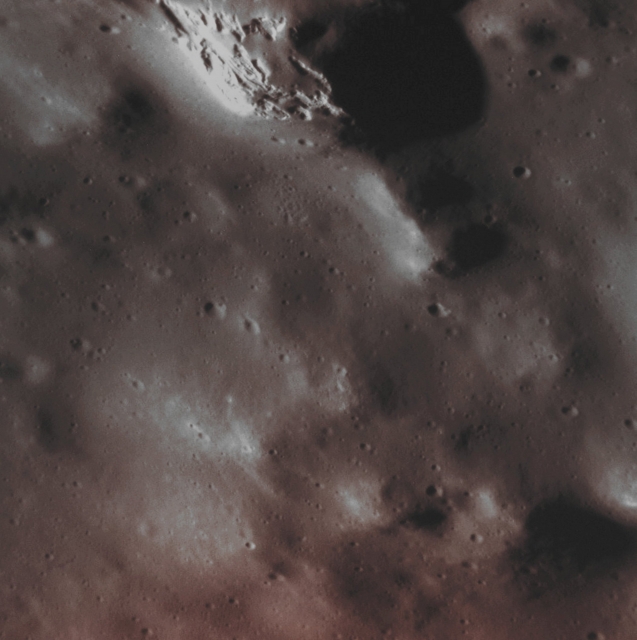
June 2, 2014
Credits: NASA/Johns Hopkins University Applied Physics Laboratory/Carnegie Institution of Washington and Dr Paolo C. Fienga/LXTT/IPF for the additional process. and color.
|
The NASA - MESSENGER Spacecraft was just approx. 184 Km (such as about 114,26 miles) above Mercury's Surface when, on May, 12, 2014, it snapped this view (approx. 7 Km - such as about 4,34 miles - across) of a large Hollowfield located inside the Impact Crater known as Ahmad Baba (Ahmad Baba - full name Abu al-Abbas Ahmad ibn Ahmad al-Takruri Al-Massufi al-Timbukti -, was a medieval Songhai Writer, Scholar, and Political "provocateur". He was born on October, 26, 1556 in the Malian City of Araouane an died on April, 22, 1627 in Timbuktu. Remember that that area, now correspondong to the African Republic of Mali, was known, back in those distant years, as Western Sudan. The Malian city of Timbuktu is home, today, to the Ahmed Baba Institute: a Library and Research Center so named in his Honor and said Institute - just out of curiosity - is home to over 18.000 ancient manuscripts). The Hollowfield, extremely well visible and defined in this picture, is exactly positioned on the South-facing Slopes - such as the Inner Northern ones - of Ahmad Baba's Peak Ring (notice that North is toward the upper-right - Dx - corner of this image). Date acquired: May, 12th, 2014 This picture (which is an Original NASA - MESSENGER Spacecraft's b/w and NON Map-Projected image published on the NASA - Planetary Photojournal with the ID n. PIA 18445) has been additionally processed, contrast enhanced, Gamma corrected, magnified to aid the visibility of the details and then colorized in Absolute Natural Colors (such as the colors that a human eye would actually perceive if someone were onboard the NASA - MESSENGER Spacecraft and then looked outside, towards the Surface of Mercury), by using an original technique created - and, in time, dramatically improved - by the Lunar Explorer Italia Team. Different colors, as well as different shades of the same color, mean, among other things, the existence of different Elements (Minerals) present on the Surface of Mercury, each having a different Albedo (---> Reflectivity) and Chemical Composition. |
News visualized: 649 times

